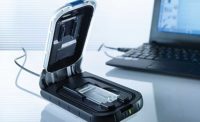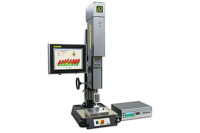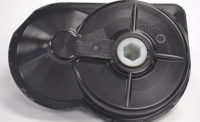Regardless of daily or seasonal variation in weather, we think of the Sun as being constant. We believe it provides the same amount of energy each day.
In truth, the Sun’s energy output varies in cycles. The solar cycle is a nearly periodic 11-year change in the Sun’s activity. Over the period of a solar cycle, solar radiation, solar flares, coronal loops, and the number and size of sunspots all exhibit a synchronized fluctuation from a period of minimum activity, to a period of a maximum activity, and back to a period of minimum activity.
According to NASA, we are now in Solar Cycle 25 with peak sunspot activity expected in 2025. Solar Cycle 24 was average in length, at 11 years, and had the fourth-smallest intensity since regular record keeping began with Solar Cycle 1 in 1755.
Solar irradiance is typically 1.361 kilowatts per square meter (kW/m2) during a period of minimum activity and 1.362 kW/m2 during a period of maximum activity, a difference of approximately 0.1 percent. Variation in solar irradiance is an important input in weather and climate models.
To study these variations, the Norwegian Space Center launched the microsatellite NorSat-1 on July 14, 2017. NorSat-1 has a polar orbit, some 600 kilometers above the Earth. Among other instruments, the satellite is equipped with a compact lightweight absolute radiometer (CLARA) to observe total solar irradiation and variations over time.
Observations of solar irradiance have been made for decades, but spectral observations have been patchy and limited to certain wavelengths. NorSat-1 was launched with a goal of providing continuous data on all wavelengths, both visible and invisible.
Developed by the Physical and Meteorological Observatory in Davos, Switzerland, CLARA is an electrical substitution radiometer for measuring total solar irradiation. Highly accurate and durable, it is based on a new design with three cavities to offer built-in redundancy and degradation tracking capability while minimizing size and weight.
Torsional Ultrasonic Welding
Assembling the instrument posed some challenges. One of them was to find a suitable method for connecting the small, 0.13-millimeter thick cavities to thermal resistors.
After extensive testing, the Observatory’s engineers chose the torsional ultrasonic welding system from Telsonic AG.
A traditional ultrasonic welding system applies linear vibrations at the joint interface. In contrast, torsional ultrasonic welding applies the linear vibrations in combination with a twisting motion at the same frequency. The result is a strong weld at the molecular level.
The technology is a proven and reliable method for assembling metal parts, such as a wire to a terminal. It offers fast processing times and extensive process control. The purely metallic connection is not subject to aging or fatigue. The firm bond also ensures very low contact resistance between components.
Ultrasonic welding can be used to join both similar and dissimilar materials, such as copper and aluminum. Additional consumables such as sleeves, solder or flux are not necessary, because the metals are welded together directly. In addition, ultrasonic welding produces low thermal stress on the parts.
This method produces a firm and mechanically stable connection that can withstand high vibrations. The torsional motion of the sonotrode introduces only minimal vibrations around the weld seam, protecting sensitive components and surfaces.
Although the satellite’s mission was originally scheduled to end in December 2022, it is continuing to transmit data. CLARA is still in operation and functioning well. However, the satellite has encountered issues with its gyroscopes, leading to inaccuracies and partial inability to align with the sun. In such cases, valid radiation measurement values cannot be obtained. Nonetheless, there are still correct measurement phases, and so far, nothing indicates a poor or degraded connection of the welded parts.
“Our CLARA instrument is still in operation and functioning well,” says Silvio Koller, electrical engineer and co-leader of the Technical Department at the observatory. “However, we require a precision of approximately ±0.5 degree for sun alignment, which is usually not a problem with larger satellites. NorSat-1 is a small satellite, more cost-effective, and therefore potentially slightly less reliable.”
Closer to home, Telsonic’s torsional ultrasonic welding process is being used in a variety of other high-reliability applications, including autonomous and electric vehicles.
For more information on ultrasonic welding, click www.telsonic.com.
ASSEMBLY ONLINE
For more information on ultrasonic welding, visit www.assemblymag.com to read these articles:
Reliable Bonding for Autonomous Driving
Ultrasonic Welders Speed Assembly of Rapid COVID Tests
Ultrasonic Welder for High-Voltage Assemblies Can Be Integrated Into Automated Lines





